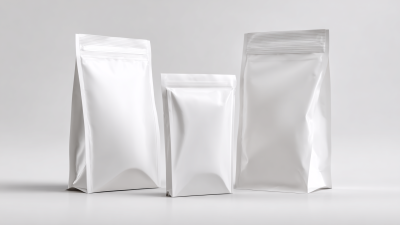Leave Your Message
In the modern manufacturing landscape, Laminate Tube production stands out as a crucial process for various industries, including cosmetics, pharmaceuticals, and food packaging. However, this production method is not without its challenges. From issues relating to material quality and sealing integrity to the complexities of machinery and equipment maintenance, numerous factors can impede the successful creation of high-quality laminate tubes. Understanding these challenges is essential for manufacturers looking to optimize their processes and enhance productivity. This blog will delve into the reasons behind common issues faced in Laminate Tube production and provide essential solutions designed to ensure success and maximize operational efficiency. By addressing these concerns head-on, businesses can not only improve their product quality but also bolster their competitive edge in the market.

The production of laminate tubes presents several challenges that manufacturers must navigate to stay competitive in the market. According to a report from Smithers Pira, the global laminate tube market is projected to reach $1.67 billion by 2026, highlighting the growing demand for these versatile packaging solutions. However, this growth is accompanied by significant production issues, such as inconsistent adhesion and the complexities involved in multilayer extrusion processes. Manufacturers often struggle with maintaining the quality of the laminate layers, which can lead to increased waste and higher operational costs.
Moreover, the equipment used in laminate tube production is often outdated or not adequately maintained, causing delays and inefficiencies. A survey by Freedonia Group indicates that 28% of manufacturers report production downtime due to mechanical failures. This can severely impact output and profitability. To address these challenges, manufacturers must invest in modernizing their equipment and investing in employee training to enhance production processes. By focusing on these key areas, the laminate tube industry can optimize production efficiency and meet rising consumer demands.
The production of laminate tubes is increasingly adopting innovative materials to improve performance and sustainability. Exploring alternative substrates such as bio-based resins, paper laminates, and recyclable plastics can enhance the structural integrity and ecological footprint of laminate tubes. These materials not only offer superior barrier properties but also allow for creative designs that cater to diverse consumer preferences.
**Tip**: When considering alternative substrates, assess the compatibility with existing production processes to avoid substantial downtime or costs. Collaboration with material suppliers can also provide insights into the latest advancements and tailored options that align with your production goals.
Furthermore, utilizing advanced coatings and adhesives can significantly optimize the performance of laminate tubes made from these innovative materials. These additions can enhance moisture resistance and prolong shelf life, making the product more appealing to manufacturers and consumers alike.
**Tip**: Conduct thorough testing of new materials and coatings in real-world conditions to ensure their reliability and performance meet industry standards, as this can mitigate risks associated with production delays or product failures.
| Issue | Proposed Solutions | Alternative Substrates | Benefits |
|---|---|---|---|
| Delamination | Improved adhesive formulations | Plant-based polymers | Eco-friendly, enhanced adhesion |
| Inconsistent tube thickness | Precision manufacturing techniques | Recycled paper composites | Cost-effective, sustainable |
| Poor printability | Advanced ink formulations | Glassine paper | High-quality print, moisture resistance |
| Difficulty in sealing | Enhanced sealing technologies | Biodegradable plastics | Reduced environmental impact |
| Limited shelf life | Better barrier properties | Aluminum foil layers | Extended product freshness |
 In the competitive landscape of laminate tube production, optimizing production efficiency is crucial for overcoming common bottlenecks that can hinder progress. Streamlined processes not only enhance output but also improve product quality, enabling manufacturers to meet the rising demand with ease. One effective approach is to implement automation in the production line. By integrating automated systems for tasks such as sealing and filling, manufacturers can significantly reduce manual errors and increase throughput.
In the competitive landscape of laminate tube production, optimizing production efficiency is crucial for overcoming common bottlenecks that can hinder progress. Streamlined processes not only enhance output but also improve product quality, enabling manufacturers to meet the rising demand with ease. One effective approach is to implement automation in the production line. By integrating automated systems for tasks such as sealing and filling, manufacturers can significantly reduce manual errors and increase throughput.
Additionally, adopting real-time monitoring technology allows for immediate adjustments and predictive maintenance, minimizing downtime and ensuring smooth operations.
Another essential solution involves a thorough analysis of the production workflow. Identifying and addressing potential bottlenecks—whether they arise in material movement, equipment utilization, or labor allocation—can lead to more effective scheduling and resource management. For instance, employing lean manufacturing principles can help eliminate waste in the production process, facilitating a more efficient use of time and materials. Training staff on best practices and fostering a culture of continuous improvement further empowers teams to contribute to the optimization of production processes. Through these essential strategies, laminate tube manufacturers can not only overcome challenges but can also position themselves for sustained success in the market.
 Sustainability in laminate tube production is increasingly gaining attention as brands seek to minimize their environmental footprint. Eco-friendly alternatives are paramount, and manufacturers must evaluate materials that foster sustainability without compromising product integrity. One viable option gaining traction is the use of bio-based plastics, which can significantly reduce reliance on fossil fuels and lower carbon emissions during production.
Sustainability in laminate tube production is increasingly gaining attention as brands seek to minimize their environmental footprint. Eco-friendly alternatives are paramount, and manufacturers must evaluate materials that foster sustainability without compromising product integrity. One viable option gaining traction is the use of bio-based plastics, which can significantly reduce reliance on fossil fuels and lower carbon emissions during production.
To make the transition to more sustainable materials, businesses should consider implementing a life cycle assessment (LCA) to evaluate the environmental impacts of their product choices. This assessment can help identify areas for improvement and support informed decision-making when selecting new materials. Additionally, collaborating with suppliers to source recycled content for laminate tubes can enhance sustainability efforts while promoting a circular economy.
Tip: When exploring eco-friendly alternatives, look for suppliers who prioritize transparency in their sourcing and production processes. This will not only strengthen your brand's commitment to sustainability but also help establish trust with environmentally-conscious consumers. Moreover, adopting innovative designs that utilize less material can lead to reduced waste and improved resource efficiency, aligning your production practices with global sustainability goals.
The cosmetics packaging market is witnessing a significant transformation, largely driven by evolving consumer preferences and a growing emphasis on sustainability. As awareness of environmental issues increases, over 70% of cosmetic brands are now aligning their packaging solutions with eco-friendly practices. This shift not only reflects a commitment to reducing waste but also caters to consumers who are increasingly prioritizing brands that support green initiatives. The demand for sustainable packaging alternatives, such as laminate tubes, is set to rise as brands look for innovative ways to meet these expectations.
In addition to sustainability, market trends reveal a surge in the adoption of various coating types in packaging materials. Coatings such as polymer and wax are gaining traction, enhancing the functionality and aesthetic appeal of products across different sectors. Brands are becoming more mindful of the thickness and base weight of their packaging materials, aiming to strike the right balance between durability and flexibility. As cosmetic companies continue to adapt to these trends, their choice of packaging will play a crucial role in attracting environmentally conscious consumers and ultimately driving market growth.






